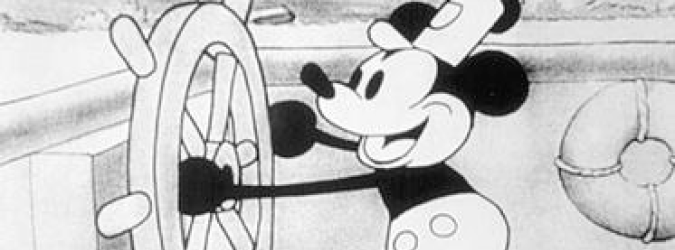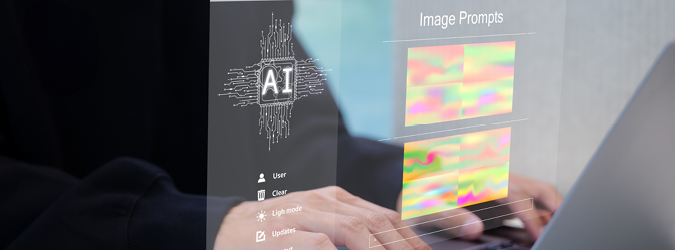Preparing for the New Wave of NFT Litigation
2.8.2023
Non-fungible tokens (NFTs) have unleashed a whole new side of blockchain technology. Unlike cryptocurrencies, NFTs may have far-reaching implications for intellectual property rights. As a result, NFTs will certainly spur novel intellectual property litigation, especially for copyright litigation and litigation under the Lanham Act (the statute that governs trademark law).
Courts are only beginning to figure out how existing intellectual property laws, such as the Copyright Act and the Lanham Act, apply to NFTs. Leading the wave, Nike,[1] Hermès,[2] and rapper Lil Yachty[3] have filed lawsuits alleging that NFTs infringe their intellectual property rights. And, in June, a case was filed to protect the Bored Ape Yacht Club NFTs that caused a flurry of attention in 2021.[4]
This article explores the contours of how NFTs can impact intellectual property rights and concludes with some suggestions for how in-house counsel can prepare for the new wave of NFT litigation.
Can NFTs Convey Intellectual Property Rights?
NFTs do not inherently convey intellectual property rights. Looking at the blockchain technology that enables NFTs, NFTs are technically just a line in a digital ledger. And we should treat them as such, at least until they become more than that. It is easy to assume that NFTs embody some sort of intellectual property or artistic asset, especially since we colloquially call NFTs “digital assets.” For example, if someone has an NFT for a unique picture, many people would assume that the NFT gives that person rights to the picture as an asset. But, without more, an NFT is simply a symbol that a particular transaction occurred that delivered the picture to the recipient. Another way to think about it is that an NFT, like a piece of software, is a type of technology – not an intellectual property right.
While NFTs do not automatically convey intellectual property rights, they can help confirm and verify that ownership rights or intellectual property rights were acquired through the proper means. Just as a ledger line confirms that a transaction occurred, NFTs can verify the identity of the true owner of intellectual property and make it harder for fraudsters to claim false rights over intellectual property.
How Do NFTs Differ From Copyrights?
NFTs are not a new form of copyright and do not automatically convey rights to copyrights. For instance, with a photograph that might be subject to copyright law, there is a bundle of rights attached: the right to access the photograph, the right to sell the photograph and the actual copyright to the photograph. An NFT could potentially convey all of those rights or none of them, depending on the structure and terms of the NFT. Because NFTs are often used to provide access to photographs, designs and other artwork that can be copyrighted, it is easy to confuse the receipt or purchase of an NFT with the rights to actually use, distribute or sell the artwork associated with the NFT.
If we remember that an NFT is more like a ticket than an intellectual property right, then an NFT for a piece of artwork conveys no more rights to the artwork than a movie ticket conveys the copyrights to a movie script.
How Can NFTs Impact Trademarks?
Likewise, NFTs are not a new form of trademark and will not necessarily convey the right to use the trademarks associated with an NFT. With many visual NFTs, such as images and replicas of real-world designer products, this may cause infringement issues because the rights to the trademark underlying a visual NFT may be needed to use, distribute and sell the NFT. This is especially true if the NFT is going to be used commercially or sold, which may put the NFT beyond the fair use protections of the Lanham Act.
NFTs are rife with potential trademark and trade dress infringement issues. (Trade dress is an area of trademark law that provides protection for the design and appearance of things. For example, the distinctive red sole on Louboutin heels could be protectible as trade dress.) This explains why the four lawsuits listed above – on behalf of Nike, Hermès, Lil Yachty, and the Bored Ape Yacht Club – all included claims under the Lanham Act (and did not include claims under the Copyright Act).
Will NFTs Implicate Patents?
NFTs are unlikely to impact patent rights as much as they will interfere with trademarks and copyrights. While NFTs have potentially endless applications, they are not often used to convey patented materials or objects. As a result, it is less likely that using an NFT will lead directly to patent infringement.
The more pressing issue is whether the blockchain technology underlying NFTs – and any software operating NFTs – infringes patents. As NFTs become more popular, inventors are bound to file more and more patent applications covering the blockchain technology behind NFTs. To list a few examples, inventors will likely invent new ways for storing NFTs on the blockchain, transferring NFTs to purchasers, making NFT transactions more secure and even bundling intellectual property rights into NFTs. Corporations should be wary of this when integrating NFTs into their transactions, systems and processes. Depending on the type of NFTs used by corporations, there may be a risk of patent infringement.
Preparing Your Corporation for NFTs
For now, individuals and corporations using NFTs should be careful not to overestimate the power of NFTs to grant rights to intellectual property, such as copyrights and trademarks. To the extent that NFTs are seen as a ticket or a line on a ledger, they will only convey as much as the terms of that ticket or ledger line. Until the courts sort out how NFTs fit within the boundaries of the Lanham Act and the Copyright Act, corporations should be extra cautious when incorporating NFTs into their operations.
Below are some suggestions for in-house counsel to keep in mind as we venture into the world of NFTs and the digitization of other legal tools, such as contracts and licenses.
- Do not assume that NFTs are intellectual property rights. NFTs – without additional technology or contractual terms – are not substitutes for intellectual property rights, including copyrights and trademarks. While NFTs could be used to convey intellectual property rights, they do not automatically transfer intellectual property rights and should not be used as a proxy for intellectual property rights.
- Independently verify whether an NFT may infringe copyrights, trademarks or patents. Corporations should treat their use of NFT technology like the use of other technologies. Accordingly, corporations should ensure that they have the proper licenses for any relevant copyrights and trademarks when using NFTs and that their use of NFT technology will not infringe any patents.
- Reevaluate intellectual property policies in light of NFTs. Many intellectual property policies have not been updated to account for the very recent challenges posed by NFTs. In updating intellectual property policies, it is also important for corporations to educate employees about these new types of digital tools and how they affect intellectual property rights.
- Brush up on the Lanham Act and the Copyright Act. As recent NFT cases show, NFT litigation will bring a new relevance to the Lanham Act and the Copyright Act. It is also likely that NFT litigation will push the boundaries of the Lanham Act and the Copyright Act in new directions. In-house counsel should make sure they are up to speed on these statutes, including how the Lanham Act addresses trade dress and false advertising.
- Apply learnings from NFTs to other new technologies in the metaverse. If nothing else, NFTs show that society, the economy and the law are entering what many are calling the “metaverse” – a world where real-world rights, assets, events, transactions and things are translated into a virtual world. Observing how NFTs play out in litigation over the coming years will educate us about how the digitization of other aspects of the real world may face similar issues.
Jonathan E. Barbee is a counsel at MoloLamken with a focus on intellectual property and technology-related litigation. With a degree in electrical engineering, he represents inventors, innovators, startups and research institutions, both as plaintiffs and defendants. In addition to being a member of the Executive Committee of NYSBA’s Corporate Counsel Section and editor of Inside, Mr. Barbee is also an active member of the Trade Secret Committee of the New York Intellectual Property Law Association, the Equity, Diversity, and Inclusion Committee of the Association of University Technology Managers (AUTM) and the Madison Council for the Madison Square Boys & Girls Club.
This article appears in a recent issue of Inside, a publication of the Corporate Counsel Section (2023; vol. 40, no. 1). For more information about the Corporate Counsel Section and to view the most recent issue, please visit NYSBA.ORG/CORPORATE.
[1] Nike, Inc. v. StockX LLC, No. 22-cv-00983-VEC (S.D.N.Y. Sept. 12, 2022).
[2] Hermès Int’l v. Rothschild, No. 22-cv-384 (S.D.N.Y. Feb. 10, 2022).
[3] McCollum v. Opulous, No. 22-cv-00587-MWF (C.D. Cal. Aug. 3, 2022).
[4] Yuga Labs, Inc. v. Ripps, No. 22-cv-4355-JFW (C.D. Cal. Dec. 16, 2022).






